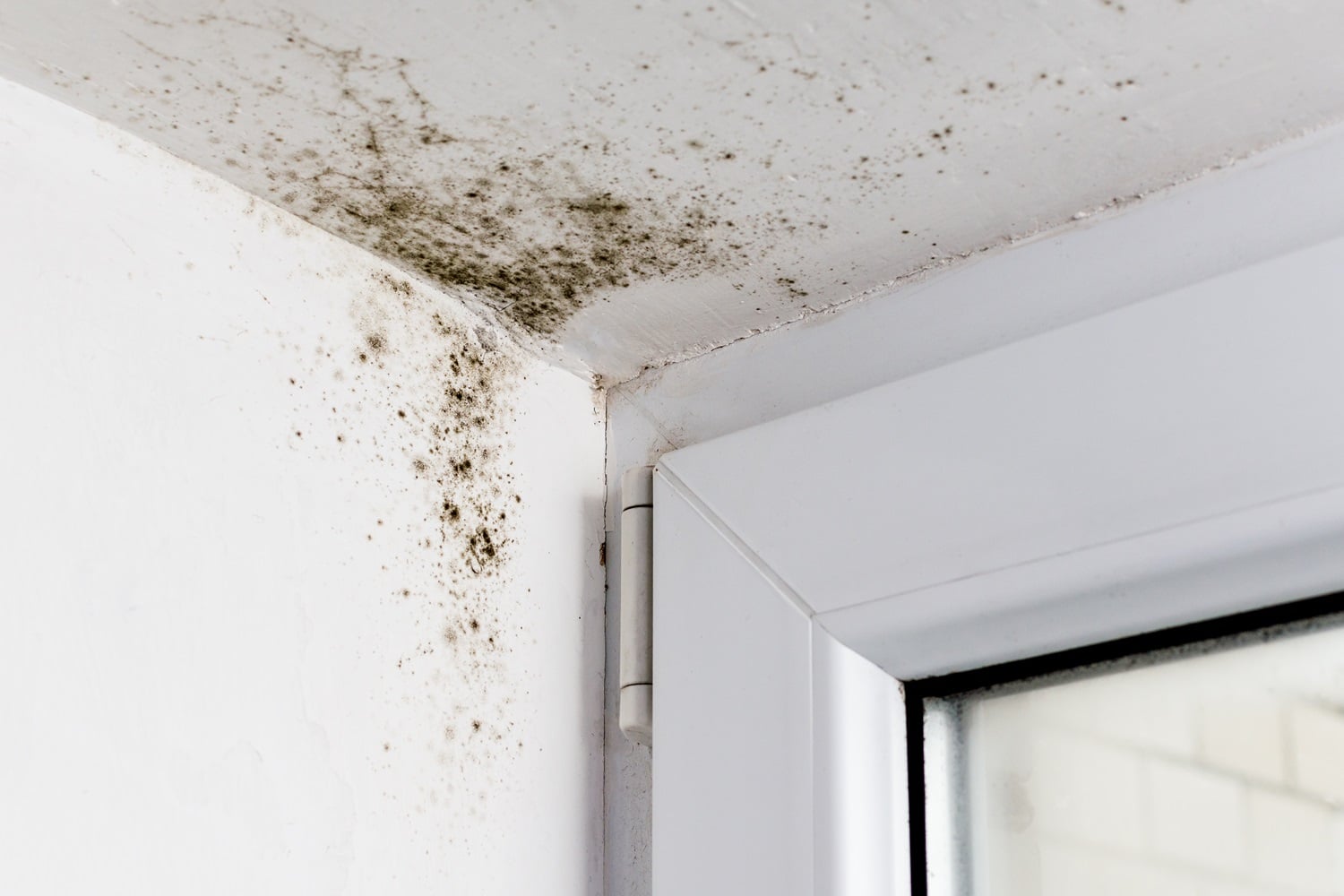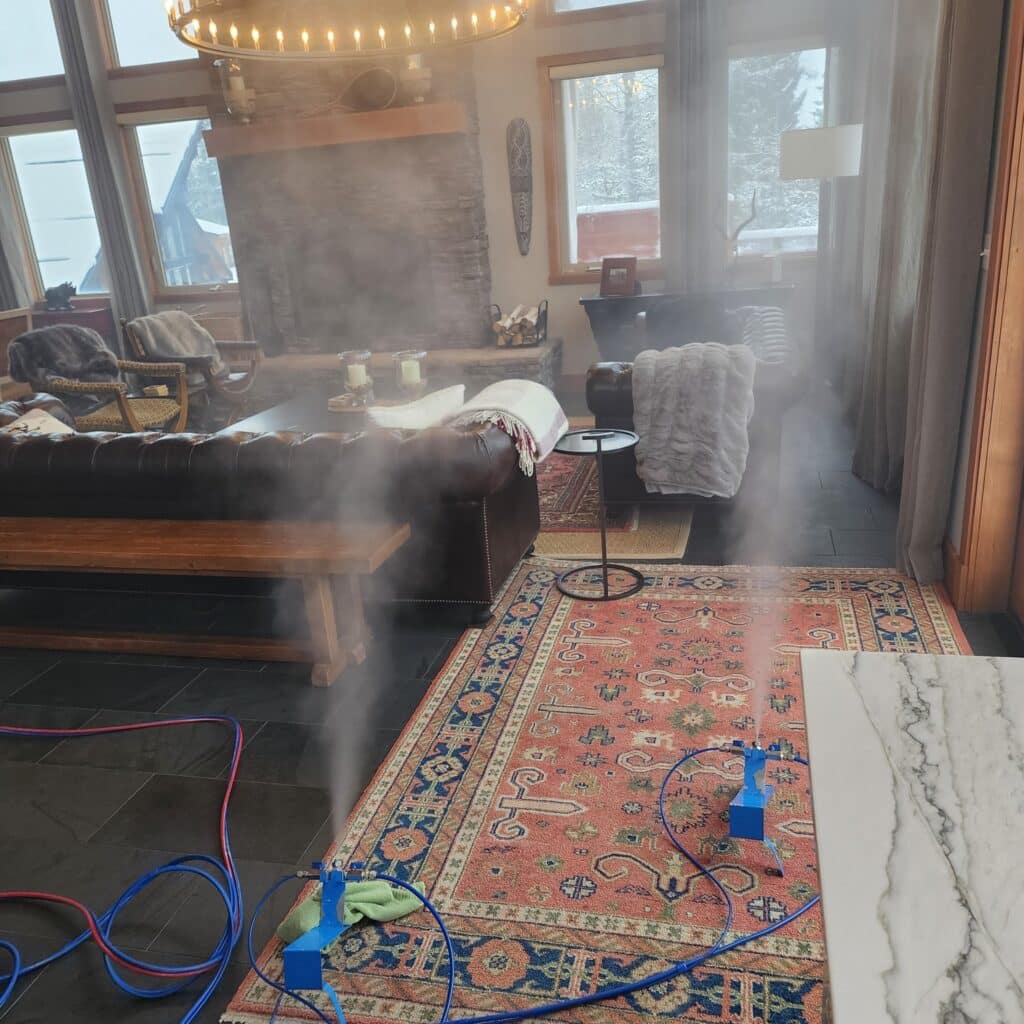Blog submitted by EnviroFog Solutions in Calgary.
Why is there mould growth in my home?
Mould is a common household issue in Alberta due to its cold climate and the fact that we build our homes tight to be energy efficient. Homeowners producing high humidity and cold temperatures create a unique problem for Alberta residents. If you live in Alberta, you’ve likely had mould on one or more of your surfaces and thought nothing of it. You’ve probably wiped it down with bleach, painted over it, and have gotten tired of it constantly growing back and just let it do its own thing.
But why does this happen? In any home, there are multiple contributing factors. It could be high condensation, lack of ventilation, structural issues like inadequate insulation, faulty plumbing, cracked foundation or an unnoticed water event. However it happened, it’s not fun. It leads to musty smells, awful stains, and, ultimately, a potential host of potential health risks. If you’ve found mould in or on the walls in your home – black mould or any other colour, for that matter – it’s vital to identify the cause or source of its growth and resolve the issue. Getting rid of mould promptly, using the correct techniques and process, gives you the best process of returning your living environment in your home to a healthy home.
If you detect mould, you should call us for mould removal in Calgary as soon as possible. At EnviroFog Solutions Inc, we see mould day in and day out (very glamorous I know) and have seen some very common similarities in the reasons for mould growth based on the space in the home. We’ve listed a few below for your benefit;
Bathroom walls
Mould thrives in damp and humid environments, making bathrooms a prime location for growth. Poor ventilation, steam from hot showers, and lingering water on surfaces can all contribute to mould formation on bathroom walls, baseboards and ceilings. If a bathroom fan is not properly functioning or it’s not used during and after showers or baths, the moisture in the air has nowhere to go. The warm, humid air condenses onto the colder bathroom walls. Over time, the moist walls will become damp. This is the optimum breeding ground for mould as it “eats” both moisture and the cellulose in common building materials like drywall, wallpaper or paint.
Bedroom walls
Mould can appear on bedroom walls due to elevated indoor humidity levels, then condensation from temperature differences between the indoor and outdoor environment, especially in poorly insulated rooms. High humidity levels, lack of ventilation, and damp items like wet laundry (air drying) can also contribute to mould growth in bedrooms. Humans raise the humidity levels within a room – warm bodies, breathing, sweat, etc. Another common cause of mould on bedroom walls is furniture (mattresses) resting against cold exterior walls or too many personal belongings prohibiting airflow to an external wall. That is to say, the warm, moist air will condense on the much colder surface, resulting in a damp internal wall. Moving furniture away from walls can reveal mould growth. This can exacerbate mould growth as furniture pressed up against bedroom walls can hinder any ventilation.
Kitchen walls
Kitchens are another common area for mould growth due to the moisture produced by cooking, washing dishes, drying clothes indoors and other daily activities. Poor ventilation or not using hood fans while cooking, opening windows and doors whenever possible, insufficient insulation, and water leaks can all lead to mould appearing in kitchens. Again, the majority of examples used above show the strong link between condensation and mould.
Basement walls
You may also find mould growing in an otherwise random location where you wouldn’t anticipate seeing mould on a wall. This can be caused by phenomena like rising damp, older homes with no vapour barrier under their concrete slab, therefore penetrating damp, bridging, etc. Structural damage, exterior grading issues or inadequate maintenance to the environment surrounding your property can lead to the introduction of moisture and damp inside your home. This may result in a damp patch or even an entire damp wall. So whether it’s caused by condensation or water intrusion problems, you can find mould often found in or on walls.
Keep in mind that every scenario is different, and these by no means account for all the situations contributing to mould growth. The best first step for any homeowner (barring any urgent situations) is to have a professional conduct an inspection. Mould cannot grow without excess moisture, so hunting down the source of moisture gives you an excellent starting point for resolution. Contacting a professional is highly recommended. They’ll have invested in the correct tools and have the associated experience of hundreds of homes to confidently identify all the variables involved.
The dangers of DIY mould removal: why bleach is not the answer
So you’ve found the source of the mould – what next? Many unofficial internet sources would tell you to just wipe mould down with bleach and call it a day. That’s likely what your landlords in the past have done for you, so it must be correct, right? Wrong. Not only is bleach highly ineffective, but it also introduces more harmful byproducts into your airspace. More on that later.
We believe that this myth of bleach being the solution has been perpetuated by “quick-fixers,” people who just want to get the problem out of their hair as easily as possible. Bleach just bleaches or discolours mould – removes the pigment so that it isn’t dark and visible anymore. The roots are still there, growing, and they will come back, sometimes with a vengeance. Bleach makes mould angry sending harmful spores airborne into your breathing space, it rapidly releases millions of spores into the air in an effort to recolonize somewhere else. These, along with the VOCs in Bleach, make for a 1-2 punch of respiratory irritants. With these spores now contaminating your airspace, you’ve got a much higher likelihood of mould landing and colonizing in other areas of your home or in the HVAC system.
That’s why we highly recommend professional remediation as soon as mould becomes an issue in your home.
Call in the experts: The mould removal process
What should you expect when hiring a mould remediator? Many companies are out there, but they will all have a similar process (or should). A qualified and experienced mould remediator will be able to stop mould permanently in a safe, controlled manner. They’ll also be able to advise a unique moisture management plan for your home so you can keep things under control in the future. The typical process should follow something like below;
Mould Inspection
As we mentioned above, the first and most important part of long-term remediation is to identify the source of mould growth. Our EnviroFog technicians will come to your home and find the source of the moisture, assess the severity of the issues and recommend the next steps based on the situation specific to your home. Learn more about our mould inspection services in Calgary.
Pre-Treatment Air Quality Tests (Spore Trap sample and non-cultured)
EnviroFog Technicians will take an air sample in rooms of concern or where water events occurred in the past or where occupants are displaying mould-related symptoms. This data will show you how severe the problem is in the home. Third-party lab reports will show what types of mould and how much of each.
Mould Removal and Remediation
Our Certified Mold Professionals will ensure that all the mould has been properly killed or denatured using a fungicidal agent via our Patented Dry Fog technology. In order to effectively eliminate mould from an entire home and HVAC system, it has to be applied properly, for the correct amount of time, in order to ensure a full kill. This is extremely important because ALL mould must be treated correctly in order to ensure it doesn’t return. We remove all contaminated materials prior to our Dry Fogging process.
Post-Treatment Air Tests (Cultured)
Once the remediation is complete, they’ll take another air test in the area as the Pre-Treatment AQT to compare to the before and after air tests. This ensures job completion and that they’ve effectively removed the mould. These 2 lab reports give you documentation to keep on file.
Why is EnviroFog DIFFERENT from “Traditional only” Remediation?
 We’re biased here, obviously. But our mould remediation process is so different; we’ve actually secured patents on it, and it’s helped tens of thousands of families worldwide. The key difference is in our dry fog technology. Where traditional remediators would just demolish and spot-treat a localized area, we treat the entire home and its HVAC system. This process ensures that all hidden mould, both airborne and surface mould, is eradicated and that the house is completely reset to safe levels.
We’re biased here, obviously. But our mould remediation process is so different; we’ve actually secured patents on it, and it’s helped tens of thousands of families worldwide. The key difference is in our dry fog technology. Where traditional remediators would just demolish and spot-treat a localized area, we treat the entire home and its HVAC system. This process ensures that all hidden mould, both airborne and surface mould, is eradicated and that the house is completely reset to safe levels.
We can do this because, unlike other remediators, we essentially “pressure-cook” the whole home with our non-toxic sterilant. This kills everything in the air and on every surface, giving a guaranteed result, every time. If you. want to know more about how we’re different, call us at 403-710-2269 or visit us at envirofogsolutions.com.
The Road to Recovery: Restoring your home to a safe haven
In summary, mould growth on walls or elsewhere in a home is extremely common in homes across Alberta and is ugly, unsightly, and also potentially very unhealthy. It’s important to take action once you have mould growth in your home because once it’s visible, you likely have some underlying issues that need resolution. You want to be sure that you’ve nailed the source of the issue. Hiring a mould professional to inspect, test and remediate ( via EnviroFog Solutions) is a great way to ensure that your mould problem is eliminated and your home is healthy…once again!
This post first appeared on https://blog.renovationfind.com